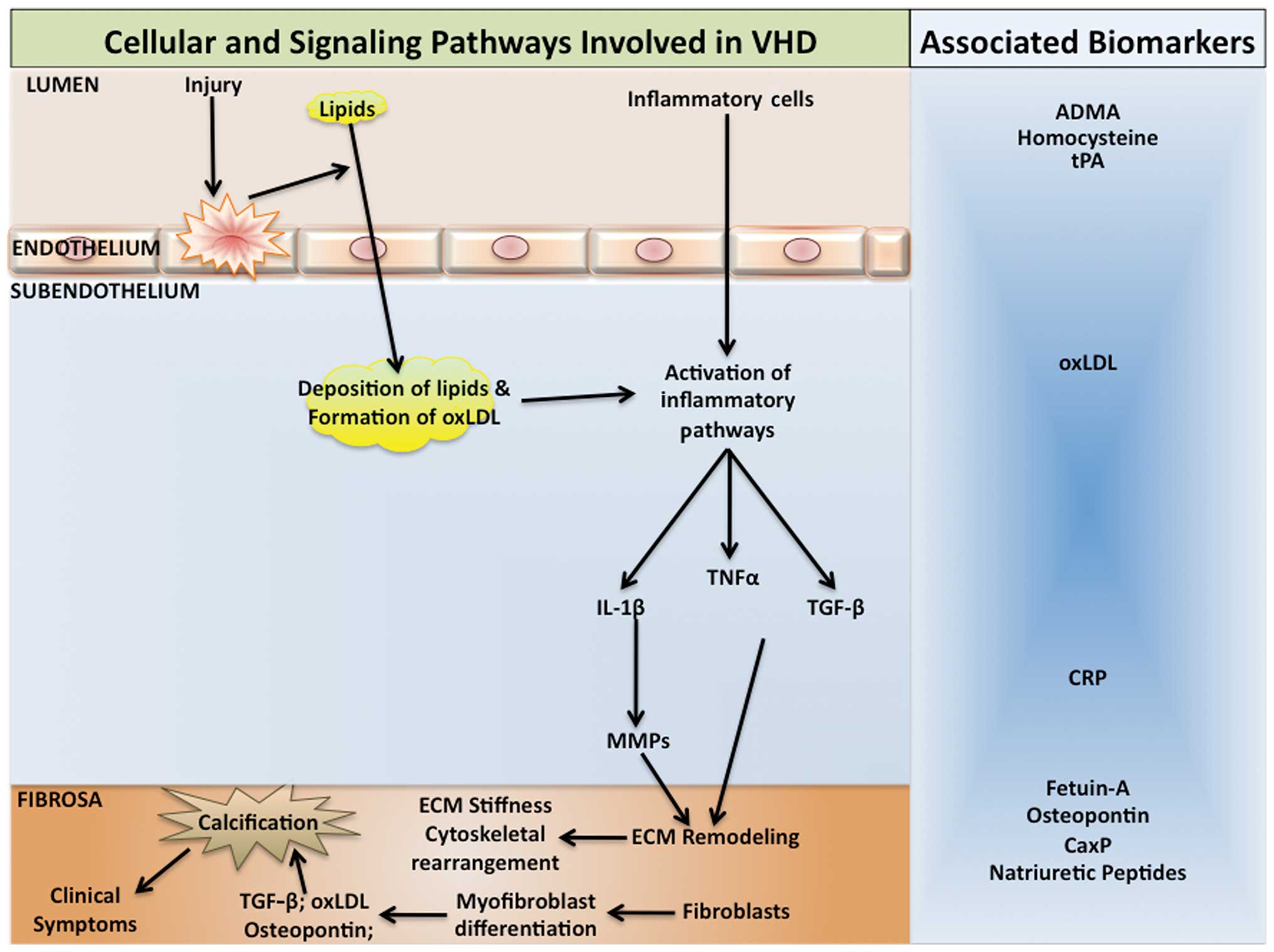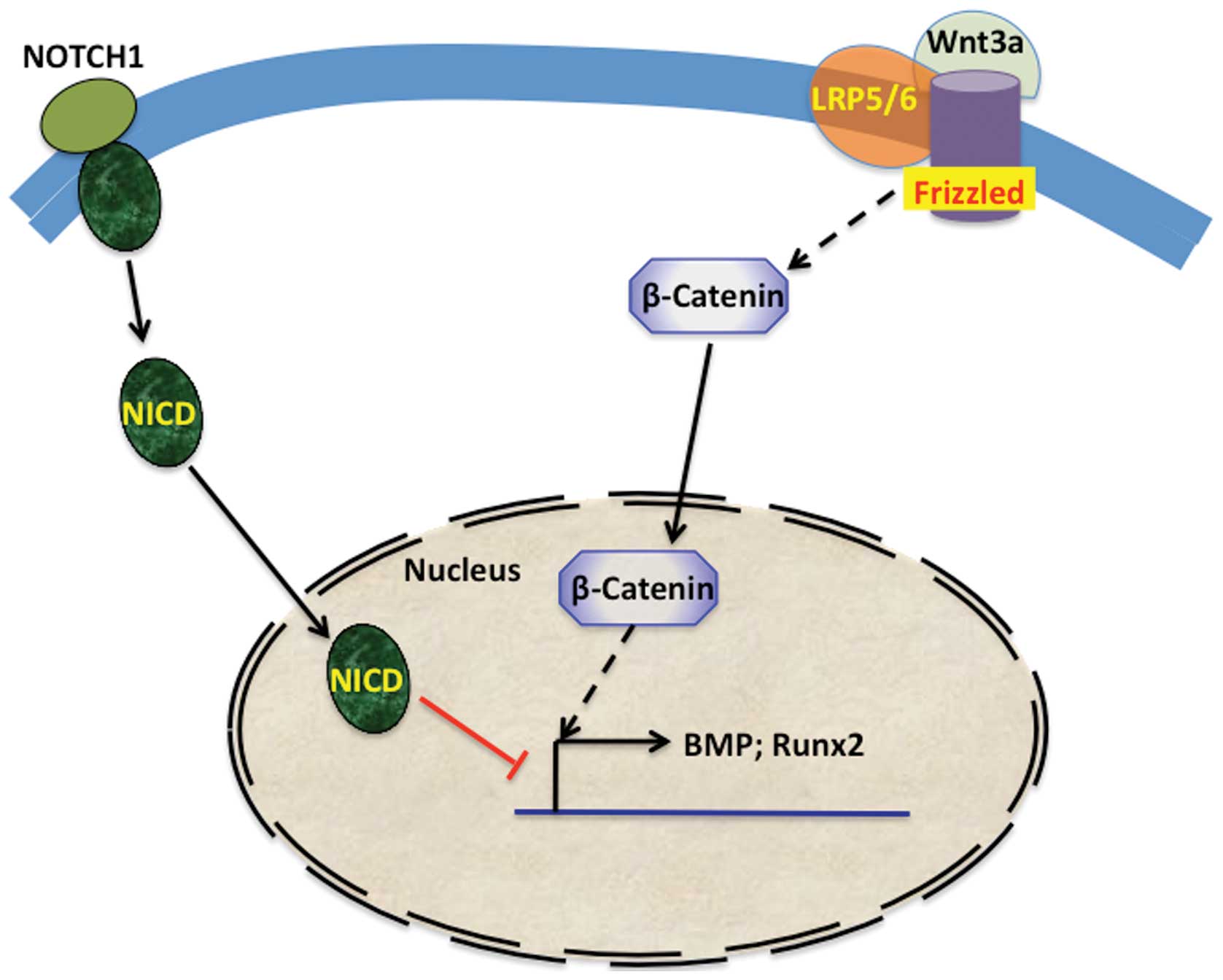|
1
|
Go AS, Mozaffarian D, Roger VL, Benjamin
EJ, Berry JD, Borden WB, Bravata DM, Dai S, Ford ES, Fox CS, et al:
American Heart Association Statistics Committee and Stroke
Statistics Subcommittee: Heart disease and stroke statistics-2013
update: a report from the American Heart Association. Circulation.
127:e6–e245. 2013. View Article : Google Scholar : PubMed/NCBI
|
|
2
|
Rajamannan NM, Evans FJ, Aikawa E,
Grande-Allen KJ, Demer LL, Heistad DD, Simmons CA, Masters KS,
Mathieu P, O'Brien KD, et al: Calcific aortic valve disease: not
simply a degenerative process: a review and agenda for research
from the National Heart and Lung and Blood Institute Aortic
Stenosis Working Group. Executive summary: Calcific aortic valve
disease-2011 update. Circulation. 124:1783–1791. 2011. View Article : Google Scholar : PubMed/NCBI
|
|
3
|
d'Arcy JL, Prendergast BD, Chambers JB,
Ray SG and Bridgewater B: Valvular heart disease: The next cardiac
epidemic. Heart. 97:91–93. 2011. View Article : Google Scholar : PubMed/NCBI
|
|
4
|
Le Gloan L, Mercier LA, Dore A, Marcotte
F, Ibrahim R, Mongeon FP, Asgar A, Miro J, Poirier N and Khairy P:
Recent advances in adult congenital heart disease. Circ J.
75:2287–2295. 2011. View Article : Google Scholar : PubMed/NCBI
|
|
5
|
Katz R, Wong ND, Kronmal R, Takasu J,
Shavelle DM, Probstfield JL, Bertoni AG, Budoff MJ and O'Brien KD:
Features of the metabolic syndrome and diabetes mellitus as
predictors of aortic valve calcification in the Multi-Ethnic Study
of Atherosclerosis. Circulation. 113:2113–2119. 2006. View Article : Google Scholar : PubMed/NCBI
|
|
6
|
Itagaki S, Adams DH and Anyanwu AC:
Triggers for surgical referral in degenerative mitral valve
regurgitation. Circ J. 77:28–34. 2013. View Article : Google Scholar : PubMed/NCBI
|
|
7
|
Maeda K, Kuratani T, Mizote I, Shimamura
K, Takeda Y, Torikai K, Nakatani S, Nanto S and Sawa Y: Early
experiences of transcatheter aortic valve replacement in Japan.
Circ J. 77:359–362. 2013. View Article : Google Scholar : PubMed/NCBI
|
|
8
|
Beckmann E, Grau JB, Sainger R, Poggio P
and Ferrari G: Insights into the use of biomarkers in calcific
aortic valve disease. J Heart Valve Dis. 19:441–452.
2010.PubMed/NCBI
|
|
9
|
Nightingale AK and Horowitz JD: Aortic
sclerosis: Not an innocent murmur but a marker of increased
cardiovascular risk. Heart. 91:1389–1393. 2005. View Article : Google Scholar : PubMed/NCBI
|
|
10
|
Tao G, Kotick JD and Lincoln J: Heart
valve development, maintenance, and disease: The role of
endothelial cells. Curr Top Dev Biol. 100:203–232. 2012. View Article : Google Scholar : PubMed/NCBI
|
|
11
|
Hinton RB Jr, Lincoln J, Deutsch GH,
Osinska H, Manning PB, Benson DW and Yutzey KE: Extracellular
matrix remodeling and organization in developing and diseased
aortic valves. Circ Res. 98:1431–1438. 2006. View Article : Google Scholar : PubMed/NCBI
|
|
12
|
Mohler ER III, Gannon F, Reynolds C,
Zimmerman R, Keane MG and Kaplan FS: Bone formation and
inflammation in cardiac valves. Circulation. 103:1522–1528. 2001.
View Article : Google Scholar : PubMed/NCBI
|
|
13
|
Boström KI, Jumabay M, Matveyenko A,
Nicholas SB and Yao Y: Activation of vascular bone morphogenetic
protein signaling in diabetes mellitus. Circ Res. 108:446–457.
2011. View Article : Google Scholar : PubMed/NCBI
|
|
14
|
Srivatsa SS, Harrity PJ, Maercklein PB,
Kleppe L, Veinot J, Edwards WD, Johnson CM and Fitzpatrick LA:
Increased cellular expression of matrix proteins that regulate
mineralization is associated with calcification of native human and
porcine xenograft bioprosthetic heart valves. J Clin Invest.
99:996–1009. 1997. View Article : Google Scholar : PubMed/NCBI
|
|
15
|
Balachandran K, Alford PW, Wylie-Sears J,
Goss JA, Grosberg A, Bischoff J, Aikawa E, Levine RA and Parker KK:
Cyclic strain induces dual-mode endothelial-mesenchymal
transformation of the cardiac valve. Proc Natl Acad Sci USA.
108:19943–19948. 2011. View Article : Google Scholar : PubMed/NCBI
|
|
16
|
Winchester R, Wiesendanger M, O'Brien W,
Zhang HZ, Maurer MS, Gillam LD, Schwartz A, Marboe C and Stewart
AS: Circulating activated and effector memory T cells are
associated with calcification and clonal expansions in bicuspid and
tricuspid valves of calcific aortic stenosis. J Immunol.
187:1006–1014. 2011. View Article : Google Scholar : PubMed/NCBI
|
|
17
|
Otto CM, Kuusisto J, Reichenbach DD, Gown
AM and O'Brien KD: Characterization of the early lesion of
‘degenerative’ valvular aortic stenosis. Histological and
immunohistochemical studies. Circulation. 90:844–853. 1994.
View Article : Google Scholar : PubMed/NCBI
|
|
18
|
Laird DF, Mucalo MR and Yokogawa Y: Growth
of calcium hydroxyapatite (Ca-HAp) on cholesterol and cholestanol
crystals from a simulated body fluid: A possible insight into the
pathological calcifications associated with atherosclerosis. J
Colloid Interface Sci. 295:348–363. 2006. View Article : Google Scholar : PubMed/NCBI
|
|
19
|
Schoen FJ and Levy RJ: Founder's Award,
25th Annual Meeting of the Society for Biomaterials, perspectives.
Providence, RI, April 28-May 2, 1999. Tissue heart valves: Current
challenges and future research perspectives. J Biomed Mater Res.
47:439–465. 1999. View Article : Google Scholar : PubMed/NCBI
|
|
20
|
Rajamannan NM, Subramaniam M, Rickard D,
Stock SR, Donovan J, Springett M, Orszulak T, Fullerton DA, Tajik
AJ, Bonow RO, et al: Human aortic valve calcification is associated
with an osteoblast phenotype. Circulation. 107:2181–2184. 2003.
View Article : Google Scholar : PubMed/NCBI
|
|
21
|
Kapustin AN, Davies JD, Reynolds JL,
McNair R, Jones GT, Sidibe A, Schurgers LJ, Skepper JN, Proudfoot
D, Mayr M, et al: Calcium regulates key components of vascular
smooth muscle cell-derived matrix vesicles to enhance
mineralization. Circ Res. 109:e1–e12. 2011. View Article : Google Scholar : PubMed/NCBI
|
|
22
|
Jahnen-Dechent W, Heiss A, Schäfer C and
Ketteler M: Fetuin-A regulation of calcified matrix metabolism.
Circ Res. 108:1494–1509. 2011. View Article : Google Scholar : PubMed/NCBI
|
|
23
|
Egan KP, Kim JH, Mohler ER III and Pignolo
RJ: Role for circulating osteogenic precursor cells in aortic
valvular disease. Arterioscler Thromb Vasc Biol. 31:2965–2971.
2011. View Article : Google Scholar : PubMed/NCBI
|
|
24
|
Fadini GP, Albiero M, Menegazzo L, Boscaro
E, de Kreutzenberg Vigili S, Agostini C, Cabrelle A, Binotto G,
Rattazzi M, Bertacco E, et al: Widespread increase in myeloid
calcifying cells contributes to ectopic vascular calcification in
type 2 diabetes. Circ Res. 108:1112–1121. 2011. View Article : Google Scholar : PubMed/NCBI
|
|
25
|
Wallby L, Janerot-Sjöberg B, Steffensen T
and Broqvist M: T lymphocyte infiltration in non-rheumatic aortic
stenosis: A comparative descriptive study between tricuspid and
bicuspid aortic valves. Heart. 88:348–351. 2002. View Article : Google Scholar : PubMed/NCBI
|
|
26
|
Towler DA: Molecular and cellular aspects
of calcific aortic valve disease. Circ Res. 113:198–208. 2013.
View Article : Google Scholar : PubMed/NCBI
|
|
27
|
Stewart CR, Stuart LM, Wilkinson K, van
Gils JM, Deng J, Halle A, Rayner KJ, Boyer L, Zhong R, Frazier WA,
et al: CD36 ligands promote sterile inflammation through assembly
of a Toll-like receptor 4 and 6 heterodimer. Nat Immunol.
11:155–161. 2010. View
Article : Google Scholar : PubMed/NCBI
|
|
28
|
Miller JD, Chu Y, Brooks RM, Richenbacher
WE, Peña-Silva R and Heistad DD: Dysregulation of antioxidant
mechanisms contributes to increased oxidative stress in calcific
aortic valvular stenosis in humans. J Am Coll Cardiol. 52:843–850.
2008. View Article : Google Scholar : PubMed/NCBI
|
|
29
|
Lincoln J and Garg V: Etiology of valvular
heart disease-genetic and developmental origins. Circ J.
78:1801–1807. 2014. View Article : Google Scholar : PubMed/NCBI
|
|
30
|
McBride KL and Garg V: Heredity of
bicuspid aortic valve: Is family screening indicated? Heart.
97:1193–1195. 2011. View Article : Google Scholar : PubMed/NCBI
|
|
31
|
Hofmann JJ, Briot A, Enciso J, Zovein AC,
Ren S, Zhang ZW, Radtke F, Simons M, Wang Y and Iruela-Arispe ML:
Endothelial deletion of murine Jag1 leads to valve calcification
and congenital heart defects associated with Alagille syndrome.
Development. 139:4449–4460. 2012. View Article : Google Scholar : PubMed/NCBI
|
|
32
|
Foffa I, Ait Alì L, Panesi P, Mariani M,
Festa P, Botto N, Vecoli C and Andreassi MG: Sequencing of NOTCH1,
GATA5, TGFBR1 and TGFBR2 genes in familial cases of bicuspid aortic
valve. BMC Med Genet. 14:442013. View Article : Google Scholar : PubMed/NCBI
|
|
33
|
Nus M, MacGrogan D, Martínez-Poveda B,
Benito Y, Casanova JC, Fernández-Avilés F, Bermejo J and de la
Pompa JL: Diet-induced aortic valve disease in mice
haploinsufficient for the Notch pathway effector RBPJK/CSL.
Arterioscler Thromb Vasc Biol. 31:1580–1588. 2011. View Article : Google Scholar : PubMed/NCBI
|
|
34
|
Freed LA, Levy D, Levine RA, Larson MG,
Evans JC, Fuller DL, Lehman B and Benjamin EJ: Prevalence and
clinical outcome of mitral-valve prolapse. N Engl J Med. 341:1–7.
1999. View Article : Google Scholar : PubMed/NCBI
|
|
35
|
Lincoln J and Garg V: Etiology of valvular
heart disease-genetic and developmental origins. Circ J.
78:1801–1807. 2014. View Article : Google Scholar : PubMed/NCBI
|
|
36
|
Armstrong EJ and Bischoff J: Heart valve
development: Endothelial cell signaling and differentiation. Circ
Res. 95:459–470. 2004. View Article : Google Scholar : PubMed/NCBI
|
|
37
|
Thanassoulis G, Campbell CY, Owens DS,
Smith JG, Smith AV, Peloso GM, Kerr KF, Pechlivanis S, Budoff MJ,
Harris TB, et al: CHARGE Extracoronary Calcium Working Group:
Genetic associations with valvular calcification and aortic
stenosis. N Engl J Med. 368:503–512. 2013. View Article : Google Scholar : PubMed/NCBI
|
|
38
|
Balmer C, Beghetti M, Fasnacht M, Friedli
B and Arbenz U: Balloon aortic valvoplasty in paediatric patients:
Progressive aortic regurgitation is common. Heart. 90:77–81. 2004.
View Article : Google Scholar : PubMed/NCBI
|
|
39
|
Webb JG, Chandavimol M, Thompson CR, Ricci
DR, Carere RG, Munt BI, Buller CE, Pasupati S and Lichtenstein S:
Percutaneous aortic valve implantation retrograde from the femoral
artery. Circulation. 113:842–850. 2006. View Article : Google Scholar : PubMed/NCBI
|
|
40
|
Vallance P, Leone A, Calver A, Collier J
and Moncada S: Accumulation of an endogenous inhibitor of nitric
oxide synthesis in chronic renal failure. Lancet. 339:572–575.
1992. View Article : Google Scholar : PubMed/NCBI
|
|
41
|
Koos R, Brandenburg V, Mahnken AH,
Mühlenbruch G, Stanzel S, Günther RW, Floege J, Jahnen-Dechent W,
Kelm M and Kühl HP: Association of fetuin-A levels with the
progression of aortic valve calcification in non-dialyzed patients.
Eur Heart J. 30:2054–2061. 2009. View Article : Google Scholar : PubMed/NCBI
|
|
42
|
Yu PJ, Skolnick A, Ferrari G, Heretis K,
Mignatti P, Pintucci G, Rosenzweig B, Diaz-Cartelle J, Kronzon I,
Perk G, et al: Correlation between plasma osteopontin levels and
aortic valve calcification: Potential insights into the
pathogenesis of aortic valve calcification and stenosis. J Thorac
Cardiovasc Surg. 138:196–199. 2009. View Article : Google Scholar : PubMed/NCBI
|
















